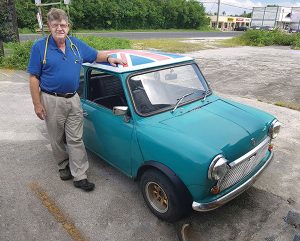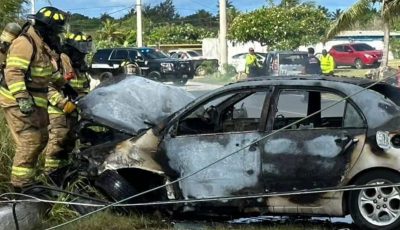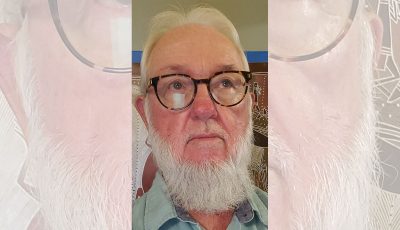Using one’s hobby to keep out of trouble

“I’m just really a car guy,” said vintage car enthusiast Dr. Edgar Tudor, seen here with his latest restoration, a 1950 Mini Cooper. (Bea Cabrera)
It is usually said that boys never grow up. “They just get older and their toys get expensive.” That may be true but veterinarian Dr. Edgar G. Tudor prefers to think it is his hobby of restoring vintage cars that keeps him out of trouble.
“It keeps me out of bars,” he said, laughing. “When you have old cars, you have to spend a lot of time working on them and so I always tell people it keeps me out of trouble.”
As a young boy growing up in Maryland, Tudor was always surrounded by cars—particularly British cars. “I grew up with British cars because that is what we drove back when I was younger.”
He said everyone drove British cars in the ’50s and ’60s and that requires everyone to be able to work on cars a bit, unlike cars these days that don’t require checking the oil often or don’t require much work until one brings it to a mechanic.
“Back then, particularly if you have a British car, you knew you were going to have to work on them…so you are constantly doing something with them and I just got into the habit of fixing cars,” he added.
Tudor began working on vintage cars when he was in the U.S. mainland and picked up the hobby again while on Saipan 10 years ago.
“I was driving my…$27,000 car, driving 35 miles an hour with the air-conditioning running. I looked at it and then thought that it’s kind of stupid to have an expensive car just to have air-conditioning when you can only go 35 miles an hour so I thought I need to get me an old car,” he said. “So I got myself a 1964 Austin Healey Sprite…Driving an old car is less expensive than having a new car.”
Tudor has three vintage cars that he rebuilt and painted himself: a 1965 Mini station wagon, a 1950 Mini Cooper, and the 1965 Austin Healy Sprite. “I do the rebuilding in my own garage.”
“I am currently working on a 1950 MG-TD, 1962 Triumph TR3, and a 1974 Volkswagen Beetle convertible…I am not planning on getting other cars once I finish these,” he added.
While Tudor practices veterinary, his hobby helps him learn from his toys.
“Most of the really good orthopedists in human medicine all have hobbies that have something to do with their hands, mostly woodworking. They said it helps you with your hand-eye coordination, helps you better in surgery, and that was my excuse. It helps me become a better diagnostician. Fixing cars teaches you not to jump in conclusions, to look for the better things, and that just helps me become a better doctor,” he said.
Restoring a car is kind of the same as helping a dog get better. “You feel good and I think that’s what keeps you alive. If you have a job where all you do is sit around and groan, you may not live long or at least happily. But if you have a profession wherein you are always fixing something and get a lot of satisfaction, I think it helps make your life better,” he added.
Not everything is perfect because, once in a while, you get something that you cannot fix. “This hobby helps you accept not being able to fix things and what you do is you have to buy a new part but it just really helps you deal with life,” he added. “I don’t plan stopping at any point. It drives my wife crazy, but, like what I said, it keeps me out of trouble because at least she knows I’m home.”



























